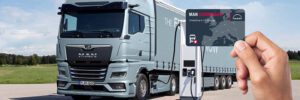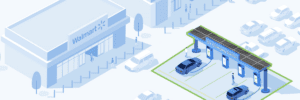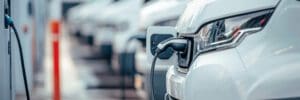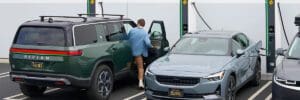Tesla’s Supercharger network has long been the gold standard for electric vehicle (EV) charging—fast, reliable, and exclusive to Tesla owners. But over the past year, a wave of other car brands has joined the club, gaining access to this robust charging infrastructure. While some Tesla owners may feel uneasy about sharing their once-exclusive network, there are many reasons to view this change as a positive step for everyone in the EV community.
Let’s dive into why Tesla owners should care about more EVs using Superchargers and how this shift benefits not just the newcomers, but Tesla drivers too.
The Growing List of EVs on Tesla’s Network
Tesla is no longer going solo. Automakers like Ford, General Motors (GM), Hyundai, Kia, Rivian, Volvo, Polestar, Genesis, and Nissan are all adopting Tesla’s North American Charging Standard (NACS) or providing adapters for their EVs to access Superchargers. Hyundai’s recent announcement is just one example: Starting in early 2025, Hyundai will offer free adapters to its EV owners, enabling them to charge at Tesla stations. Additionally, new Hyundai models will come equipped with NACS ports for seamless charging.
This growing list of brands represents a huge step toward standardizing EV charging, a critical need as electric vehicles become more mainstream. If you’re curious about the full lineup of brands now compatible with Tesla’s chargers, check out our latest blog post on EVs that can use Tesla Superchargers.
Why Tesla Owners Should Pay Attention
1. More EVs = More Investment in Charging Infrastructure
The influx of other brands using Tesla’s Superchargers isn’t just about sharing resources; it’s about growth. With more automakers contributing financially to Tesla’s network, Tesla can expand its charging locations and improve existing stations. This means fewer worries about finding a Supercharger on a long road trip.
Tesla is already planning to increase the number of chargers to meet rising demand. More funding from partnerships with other automakers will accelerate these expansions, benefiting everyone.
- Boosting EV Adoption Benefits the Planet
By opening up the Supercharger network, Tesla is helping make EV ownership more accessible. More EVs on the road mean a bigger push toward reducing greenhouse gas emissions. Tesla owners have always been at the forefront of sustainable driving, and this move strengthens the larger mission of combating climate change. It’s a win for the environment and a point of pride for Tesla drivers who value sustainability.
- The Future of EV Charging: Universal Standards
Imagine a world where every EV can charge at any station without worrying about ports, adapters, or compatibility. Tesla is leading the charge (pun intended) toward making this vision a reality by promoting the North American Charging Standard (NACS). The more automakers adopt NACS, the closer we get to a truly universal charging network.
For Tesla owners, this means greater convenience as more stations adopt NACS. Whether you’re at a Tesla Supercharger or another network’s station, charging your EV will be simpler and faster.
Addressing Tesla Owners’ Concerns
“Will Supercharger Stations Be Overcrowded?”
This is a valid concern, especially in high-traffic areas. However, Tesla is proactively addressing potential congestion by:
-
Adding more chargers: With increased funding from other automakers, Tesla plans to expand its network significantly.
-
Dynamic pricing: Tesla already uses tiered pricing to encourage drivers to charge during off-peak hours, reducing wait times.
-
Dedicated chargers: Some locations may reserve chargers exclusively for Tesla owners, ensuring access when needed most.
“Will Charging Speeds Slow Down?”
Tesla’s Superchargers are designed for efficiency. Even with more EVs using the network, the system’s high-power capabilities ensure fast charging times. Plus, automakers adopting NACS must meet Tesla’s technical standards, so you won’t experience slower speeds due to compatibility issues.
Practical Benefits for Tesla Owners
1. Shared Costs, Better Maintenance
Allowing other automakers to use Tesla’s network means shared maintenance and operational costs. This could lead to lower prices for Tesla owners over time, as more users contribute to keeping the network running smoothly.
2. A Unified Charging Ecosystem
Tesla’s decision to open its network is pushing the industry toward standardization. This benefits Tesla owners by reducing the need for adapters or extra planning when traveling. In the near future, you’ll see more stations with NACS ports, making cross-country trips easier.
3. Strengthening Tesla’s Leadership
Tesla’s willingness to share its Supercharger network solidifies its position as a leader in EV infrastructure. This benefits all Tesla owners by enhancing the brand’s reputation and long-term market influence, ensuring ongoing innovation and improvements.
What’s Next for Tesla and the EV World?
As Hyundai and other automakers continue to join Tesla’s charging ecosystem, the EV world is shifting toward greater accessibility and convenience. For Tesla owners, this means more robust infrastructure, less range anxiety, and the satisfaction of driving a vehicle that’s paving the way for the future of mobility.
Tesla’s Supercharger network is no longer just a perk for Tesla owners—it’s becoming the backbone of EV charging in North America. By embracing this change, Tesla drivers can enjoy even greater benefits while playing a key role in the broader adoption of electric vehicles.
Want to know which EVs are now compatible with Tesla Superchargers? Check out this blog post for the full list and see how the network is growing.
Together, we’re driving toward a cleaner, more connected future. As a Tesla owner, you’re still leading the pack—now with a bigger team supporting the journey.





